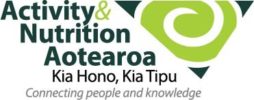19 Jul Health and Independence Report 2017
The Health and Independence Report published on 16 July 2018, is the director-general of health’s annual report on the state of public health  in New Zealand (NZ). The 2017 report presents an overview of the health of New Zealanders drawing on a range of sources. This report paints a rich picture of the health status of the NZ population and it is highly advised the report is read in its entirety.
in New Zealand (NZ). The 2017 report presents an overview of the health of New Zealanders drawing on a range of sources. This report paints a rich picture of the health status of the NZ population and it is highly advised the report is read in its entirety.
ANA summarises a few of the relevant findings for the public health nutrition & physical activity sector below:
Overview of the population
New Zealanders are living longer and life expectancy has increased at a faster rate than the improvements in health expectancy, which means they are experiencing more of their lives in poor health.
There are inequities in life expectancy for Māori and Pacific peoples.
Long-term conditions such as cardiovascular disease, cancer, musculoskeletal conditions, mental illness and diabetes are major contributors to poor health, disability and premature death. Many of these conditions reflect inequities for Māori, Pacific peoples and people living in areas of higher deprivation.
Being overweight, having an unhealthy diet, tobacco use, high blood pressure and alcohol and other drug use are among the leading modifiable risk factors in the population. Addressing modifiable risk factors has the potential to reduce approximately 1/3 of health loss in NZ.
Smoking rates have improved, alcohol use has not changed and cannabis use has increased since 2011/12.
The majority of adults and children get enough sleep.
The report contains a section on health across the life course, this includes the key influences on early development and the importance of the first 1,000 days of life – the days from conception through to a child’s second birthday. It also considers the aging population.
Obesity 
NZ ranks 3rd of all OECD for rates of obesity, after Mexico & the USA.
1/3 of all adults are obese with another 1/3 being overweight.
1/3 of NZ children aged 2-14 year’s are either overweight or obese with highest rates in Pacific and Maori children.
Children living in the most socioeconomically deprived areas were 2.5 times more likely to be obese than those living in the least deprived areas.
Adults living in the most socioeconomically deprived neighbourhoods were 1.5 times more likely to be obese than those living in the least deprived neighbourhoods
Physical activity
Both the built and natural environments have an important influence on health and wellbeing. Minimising risk factors such as air and water pollution and changing urban design to promote active lifestyles by making green space available and providing easy and safe active transport are important for improving health and environmental outcomes.
45% of children used active transport (walking, cycling or other non-motorised modes) to get to and from school.
Half the adult population are physically active; undertaking 2.5 hours of moderate activity or 1.25 hours of vigorous activity spread throughout the week. Pacific and Asian adults and those living in the least deprived areas are less likely to be physically active.
Screen time
For the first-time data has been collected on screen time for children. Few children are meeting the Ministry of Health recommendation with 83.4% of children aged 2–14 years, spending two or more hours a day watching TV or looking at a screen. (excluding at school or for homework)
Food and Nutrition
Dietary risk factors account for 8.6% of all health loss. This includes having a low intake of fruit and vegetables, a high intake of salt, sugar and red meat, and low fibre consumption.
 The number of adults eating five plus a day is decreasing with only 39.8 % of all adult New Zealanders meeting the vegetable and fruit intake guidelines (3+ servings of vegetables and 2+ servings of fruit per day). These decreases are significant and have occurred across nearly all subgroups. Inequities are highlighted with Māori, Pacific and Asian adults less likely to meet the combined fruit and vegetable guidelines. Males were also significantly less likely than females to meet the combined vegetable and fruit guidelines.
The number of adults eating five plus a day is decreasing with only 39.8 % of all adult New Zealanders meeting the vegetable and fruit intake guidelines (3+ servings of vegetables and 2+ servings of fruit per day). These decreases are significant and have occurred across nearly all subgroups. Inequities are highlighted with Māori, Pacific and Asian adults less likely to meet the combined fruit and vegetable guidelines. Males were also significantly less likely than females to meet the combined vegetable and fruit guidelines.
Children were more likely to meet the recommended daily fruit intake than the recommended vegetable intake. Those living in the most socioeconomically deprived areas were less likely to meet the combined fruit and vegetables recommendations.
Eating breakfast at home every day is an indicator of healthy eating behaviours and this survey showed most children eat breakfast at home every day, however, there were marked inequities. Those living in the most deprived areas were three times less likely than those living in the least deprived areas to have eaten breakfast at home on at least five days in the week.
The future
The report concludes ‘Reducing health inequities is vital if we are to improve the lives of all New Zealanders.’
The report highlights the population is forecast to grow, become more diverse and get older, which will increase the demand for health services. Focusing on prevention and improving how the services work together is vital to population health outcomes.
Essential areas of focus for the future include: increasing access to primary health care, using technology and supporting the health workforce in its important role of improving health outcomes.

